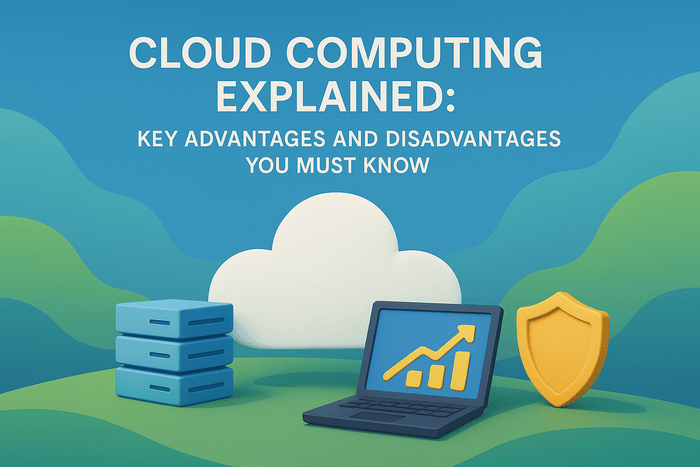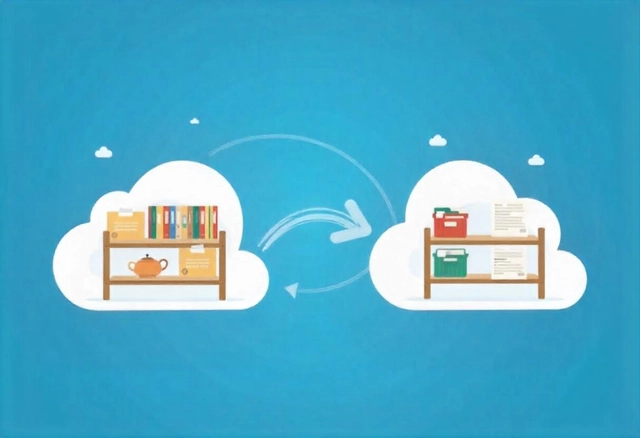Cloud computing has transformed how we build, deploy, and scale technology. Over the last decade, it has gone from being a buzzword to becoming the backbone of modern businesses, powering startups, enterprises, and even everyday applications you use on your phone.
As someone who has worked with the cloud for years, I have seen both the incredible opportunities it unlocks and the challenges it introduces. In this post, I will break down what cloud computing is, its key advantages, and the disadvantages you should consider before adopting it.
What Is Cloud Computing?
At its core, cloud computing is the delivery of computing services like servers, storage, databases, networking, and software over the internet or a network (“the cloud”). Instead of buying and maintaining physical hardware, you rent what you need from providers like Amazon Web Services (AWS), Microsoft Azure, or Google Cloud Platform (GCP).
Think of it as the difference between:
- Owning a power generator (on-premise data center).
- Plugging into the electricity grid and paying only for what you use (cloud).
Cloud services are typically offered in three main models:
- IaaS (Infrastructure as a Service): Raw computing resources like servers and storage.
- PaaS (Platform as a Service): Pre-built platforms for app development and deployment.
- SaaS (Software as a Service): Ready-to-use software delivered via the internet.
Read more about the basics of Cloud Computing here.
Advantages of Cloud Computing
1. Cost Savings
You avoid the heavy upfront investment of buying hardware and only pay for resources you use. For many businesses, this “pay-as-you-go” model is far more cost-effective.
2. Scalability and Flexibility
Need to handle a surge in traffic? With a few clicks, you can scale your resources up (or down). This elasticity is crucial for startups and enterprises alike.
3. Global Accessibility
With cloud platforms, your data and applications can be accessed anywhere in the world with an internet connection. This enables remote work, global collaboration, and faster product delivery.
4. Innovation and Speed
Cloud providers offer advanced services such as machine learning APIs, big data analytics, and serverless computing. This lets teams experiment, innovate, and launch products faster than traditional setups.
5. Automatic Updates & Maintenance
You no longer need to worry about patching servers or maintaining infrastructure. Cloud vendors handle this for you, allowing your teams to focus on business value rather than maintenance.
Disadvantages of Cloud Computing
1. Security and Compliance Concerns
While cloud providers invest heavily in security, data stored in the cloud is still exposed to cyber risks, misconfigurations, and regulatory issues. Businesses must implement strong governance and compliance policies.
2. Downtime Risks
Even the best providers experience outages. If your provider goes down, so does your service—something that can be costly depending on your business model.
3. Vendor Lock-In
Switching from one cloud provider to another can be complex and expensive due to proprietary services, architectures, and data transfer costs. Many organizations end up locked into a single provider.
4. Hidden Costs
While cloud appears cheap initially, costs can spiral out of control if usage isn’t monitored. Services like data egress (moving data out of the cloud) often surprise businesses with unexpected bills.
5. Internet Dependency
Since the cloud relies on internet access, poor connectivity directly impacts productivity and service availability. For businesses in regions with unstable networks, this can be a major limitation.
Striking the Balance
Cloud computing isn’t a silver bullet—it’s a trade-off. For most organizations, the benefits far outweigh the drawbacks, especially when proper planning and governance are in place.
If you’re considering cloud adoption, here’s some advice from my experience:
- Start small with a hybrid or multi-cloud approach.
- Use cost monitoring tools to avoid surprises.
- Build security into your architecture from day one.
- Train your teams, because cloud success depends on people, not just technology.
Conclusion
Cloud computing is one of the most transformative technologies of our time. It gives organizations the ability to move fast, reduce costs, and innovate at scale. But it also requires careful consideration of security, compliance, and cost management.
Whether you’re a small business owner, a developer, or a decision-maker at a large enterprise, understanding the advantages and disadvantages of cloud computing will help you make smarter choices for your business.







